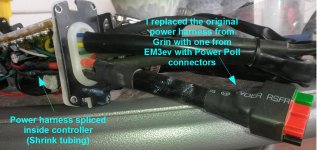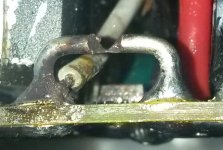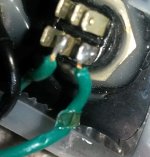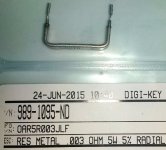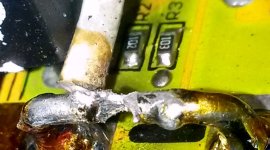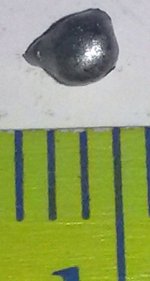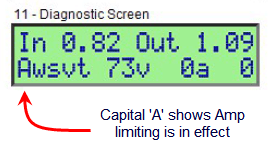Alan B
100 GW
I don't think increasing current ever reduces the heat in the motor due to I squared R. It may allow the system to crest the hill sooner and reduce the integrated heat-time total however.
Slope and system mass in our experiment here are taken as constant, battery voltage is high enough to allow the constant current we choose. More on that now:
I squared R in the motor produces two things. One is heat. The other is the magnetic field that makes torque.
If we hold current constant then the heat is constant (ignoring the much smaller heat from hysteresis losses, etc that will grow at high speeds).
If the RPM is zero the back EMF is zero and the voltage required to maintain our value of constant current is low. All the power is all going into heat.
As the motor accelerates the back EMF rises, and the voltage required to maintain our value of constant current increases. The I squared R heat is not changing (ignoring the small change due to R increasing at the motor heats). The increasing voltage needed to maintain the current is contributing to useful work. The additional power from the current times the increased voltage is doing useful motor work climbing the grade.
The controller generates a voltage step-down from the battery to the motor with PWM. It can maintain a constant current up to a point where the PWM reaches 100%, then the current will fall off with increasing RPM. To maintain the constant current (and torque) at higher speed would require raising the battery voltage, or lowering system resistance (better wiring, lower IR batteries, lower IR controller, lower IR motor) or less back EMF (different motor or winding).
Another technique for increasing speed beyond 100% PWM and the battery voltage limit is to employ "field weakening" and use some current to generate a magnetic field that effectively opposes and weakens the permanent magnet field at the rotor which changes the torque and speed constants of the motor and makes a motor with less back EMF so more speed is possible. This is similar to changing the timing of the rotating field vs the rotor.
Slope and system mass in our experiment here are taken as constant, battery voltage is high enough to allow the constant current we choose. More on that now:
I squared R in the motor produces two things. One is heat. The other is the magnetic field that makes torque.
If we hold current constant then the heat is constant (ignoring the much smaller heat from hysteresis losses, etc that will grow at high speeds).
If the RPM is zero the back EMF is zero and the voltage required to maintain our value of constant current is low. All the power is all going into heat.
As the motor accelerates the back EMF rises, and the voltage required to maintain our value of constant current increases. The I squared R heat is not changing (ignoring the small change due to R increasing at the motor heats). The increasing voltage needed to maintain the current is contributing to useful work. The additional power from the current times the increased voltage is doing useful motor work climbing the grade.
The controller generates a voltage step-down from the battery to the motor with PWM. It can maintain a constant current up to a point where the PWM reaches 100%, then the current will fall off with increasing RPM. To maintain the constant current (and torque) at higher speed would require raising the battery voltage, or lowering system resistance (better wiring, lower IR batteries, lower IR controller, lower IR motor) or less back EMF (different motor or winding).
Another technique for increasing speed beyond 100% PWM and the battery voltage limit is to employ "field weakening" and use some current to generate a magnetic field that effectively opposes and weakens the permanent magnet field at the rotor which changes the torque and speed constants of the motor and makes a motor with less back EMF so more speed is possible. This is similar to changing the timing of the rotating field vs the rotor.


